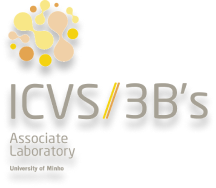
Serotonin signaling and proteostasis
This project addresses an unmet medical need- the lack of effective treatment for any of the aging-associated neurodegenerative diseases. Due to the worldwide aging of the population, by 2050 it is expected that over 135 million people will suffer from these devastating disorders. They display complex and partly distinctive pathophysiological profiles, yet they all share a prime feature: accumulation of aberrantly processed and misfolded proteins into aggregates. Therefore, they are often called neuronal proteinopathies (NPs).
Based on an unbiased screen, we found that activation of serotonergic signaling suppressed protein aggregation and restored motor behavior in animal models of polyglutamine diseases, establishing a mechanistic link between suppression of disease-protein toxicity and aggregation (proteotoxicity) and the neurotransmitter serotonin (5-HT). 5-HT signaling pathways integrate basic physiology and essential brain functions, suggesting an important and overarching mode-of-action for this neurotransmitter in the brain. This project aims at understanding how activation of 5-HT neurotransmission modulates protein homeostasis (aka. proteostasis) in the brain, potentially impacting in nearly all processes that depend on protein folding and function in cells. Using a multi-disciplinary approach, combining whole-organism fast-throughput drug screening, in vivo folding sensors, targeted genome editing, opto/chemogenetic manipulation of neuronal activity and multi-omics analyses, we propose to accelerate drug discovery by identifying, among the 5-HT system-targeting drugs (mostly already in use in the clinics), an enhancer of proteostasis and to uncover the cellular-pathways that regulate proteotoxicity. By challenging the traditional approach for drug discovery and development, this project has the potential to define 5-HT as a biological suppressor of toxic protein aggregation and to identify biomarkers of 5-HT-mediated therapeutics for prospective clinical studies in NP patients.
Funding Agency
FCT, National Ataxia Foundation, Ataxia UK
Funding Agency
FCT, National Ataxia Foundation, Ataxia UK
Project Reference
Project Members


Patricia Maciel

Sara Duarte-Silva

Joana Pereira-Sousa

Stéphanie Oliveira

Lídia Nunes-Carvalho

Bruna Ferreira-Lomba

Cármen Vieira

Daniela Monteiro-Fernandes

Daniela Vilasboas-Campos
Main Project Outcomes
S. Queirós, “Right ventricular segmentation in multi-view cardiac MRI using a unified U-net model”, in E. Puyol Antón et al. (eds) Statistical Atlases and Computational Models of the Heart. Multi-Disease, Multi-View, and Multi-Center Right Ventricular Segmentation in Cardiac MRI Challenge. STACOM 2021. Lecture Notes in Computer Science, vol 13131, pp. 287-295, Springer, Cham, 2022.
“Best Paper Award in the M&Ms-2 Challenge”, by M&Ms2 Challenge organizers and the Medical Image Computing and Computer Assisted Intervention (MICCAI) Society.
Main Project Outcomes
PATENT
“Citalopram or escitalopram for use in the treatment of neurodegenerative diseases” (EP3270913B1)
Jalles, A., Vieira, C., Pereira-Sousa, J., Vilasboas-Campos, D., Mota, A. F., Vasconcelos, S., Ferreira-Lomba, B., Costa, M. D., Da Silva, J. D., Maciel, P., & Teixeira-Castro, A. (2022). Aripiprazole Offsets Mutant ATXN3-Induced Motor Dysfunction by Targeting Dopamine D2 and Serotonin 1A and 2A Receptors in C. elegans. Biomedicines, 10(2), 370. https://doi.org/10.3390/biomedicines10020370
Pereira-Sousa, J., Ferreira-Lomba, B., Bellver-Sanchis, A., Vilasboas-Campos, D., Fernandes, J. H., Costa, M. D., Varney, M. A., Newman-Tancredi, A., Maciel, P., & Teixeira-Castro, A. (2021). Identification of the 5-HT1A Serotonin Receptor as a Novel Therapeutic Target in a C. elegans Model of Machado-Joseph Disease. Neurobiology of Disease, 152, 105278. https://doi.org/10.1016/j.nbd.2021.105278
Ashraf, N. S., Duarte-Silva, S., Shaw, E. D., Maciel, P., Paulson, H. L., Teixeira-Castro, A., & Costa, M. D. C. (2019). Citalopram Reduces Aggregation of ATXN3 in a YAC Transgenic Mouse Model of Machado-Joseph Disease. Molecular Neurobiology, 56(5), 3690–3701. https://doi.org/10.1007/s12035-018-1331-2
Esteves, S., Oliveira, S., Duarte-Silva, S., Cunha-Garcia, D., Teixeira-Castro, A., & Maciel, P. (2019). Preclinical Evidence Supporting Early Initiation of Citalopram Treatment in Machado-Joseph Disease. Molecular Neurobiology, 56(5), 3626–3637. https://doi.org/10.1007/s12035-018-1332-1
Teixeira-Castro, A., Jalles, A., Esteves, S., Kang, S., da Silva Santos, L., Silva-Fernandes, A., Neto, M. F., Brielmann, R. M., Bessa, C., Duarte-Silva, S., Miranda, A., Oliveira, S., Neves-Carvalho, A., Bessa, J., Summavielle, T., Silverman, R. B., Oliveira, P., Morimoto, R. I., & Maciel, P. (2015). Serotonergic Signalling Suppresses Ataxin 3 Aggregation and Neurotoxicity in Animal Models of Machado-Joseph Disease. Brain, 138(Pt 11), 3221–3237. https://doi.org/10.1093/brain/awv262



Contact us
Phone: +351 253 604 967
Fax: +351 253 604 809
Email: icvs.sec@med.uminho.pt
Address
Life and Health Sciences
Research Institute (ICVS)
School of Medicine,
University of Minho,
Campus de Gualtar
4710-057 Braga
Portugal

Copyright ©2025 ICVS. All Rights Reserved. Developed by TCIT



Copyright ©2025 ICVS. All Rights Reserved. Developed by TCIT
Address
Life and Health Sciences
Research Institute (ICVS)
School of Medicine,
University of Minho,
Campus de Gualtar
4710-057 Braga
Portugal



Copyright ©2025 ICVS. All Rights Reserved
Address
Life and Health Sciences
Research Institute (ICVS)
School of Medicine,
University of Minho,
Campus de Gualtar
4710-057 Braga
Portugal





